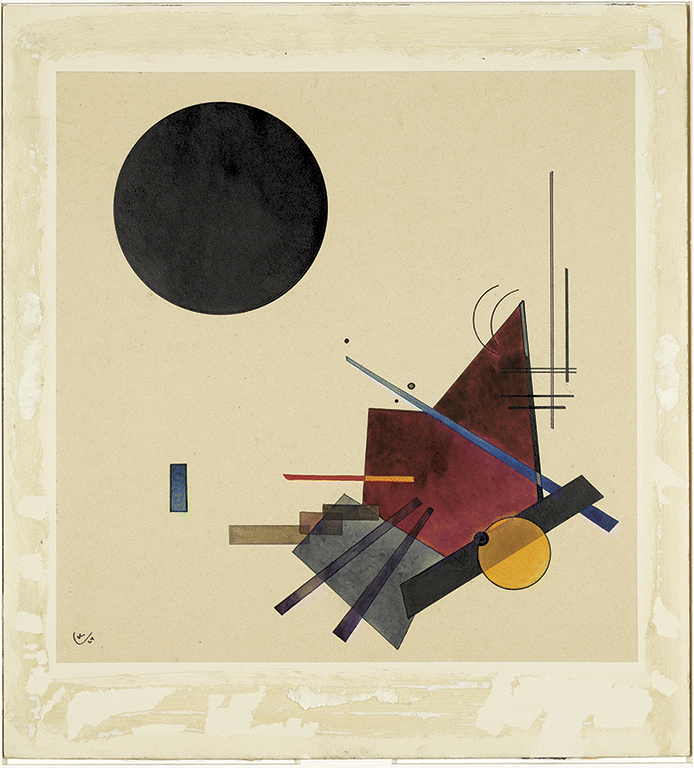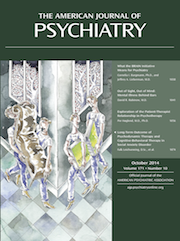Abstract art was not invented in the West. Many non-Western cultures have a centuries-long tradition of nonrepresentational art that infuses their ceramics, textiles, and architecture. Dickerman observed that the advent of abstract art in the West in the early 20th century “presented paintings that differed from almost all of those that had preceded them in the long history of the medium in the Western tradition: shunning the depiction of objects in the world, they displayed works with no discernible subject matter. Indeed they abandoned the premise of making a picture
of something” (
1, p. 13).
Wassily Kandinsky was a seminal figure in this upheaval. As Whitford commented, Kandinsky “did not invent abstract art but he was its most consistent and consequential pioneer. He was also the first to give abstraction a coherent theoretical foundation. In numerous essays and two books he defined a basic pictorial language of pure colours and form and suggested what it could be made to communicate and how” (
2, p. 12).
Kandinsky was born in Moscow, the only son of a wealthy tea merchant. Art entranced him (and was therapeutic) from an early age. In a memoir, he recalled that from childhood on, periods of intense anxiety characterized by “inner shuddering,” depression, and nightmares could be resolved only through drawing, “so that I no longer felt myself” (
3, p. 50). He had an extensive musical education, which later had an impact on his painting: “The tones of colours, like those of music, are of a much subtler nature than can be described in words” (
3, p. 51).
While a student at Moscow University, be became fascinated with ethnography, perhaps because of his father’s exotic origins in eastern Siberia. In 1889 he made a field trip to the remote Russian province of Vologda. This was a transformative experience: “I shall never forget the great wooden houses covered with carvings. In these magical places I encountered something I have never encountered again. They taught me to move within the picture, to live within the picture” (
4, p. 368). Much later Kandinsky wrote of the “violent impression” that Vologda evoked and credited the “abstraction” of his work to its impact (
4, p. xiii).
In 1896 Kandinsky, by now married to his older second cousin, left Moscow for Munich to pursue a career as an artist. He became a founding member of the
Blaue Reiter (Blue Rider) group, a radical Expressionist movement that postulated that color could convey spiritual meaning. In the inaugural exhibition of the group in 1912, Kandinsky contributed
Komposition V, which Dickerman asserts was a “radically new picture type and initiated the assault on referential form” (
1, p. 50). Simultaneously, Kandinsky published
Concerning the Spiritual in Art, in which he proclaimed in somewhat messianic terms, “The artist is not only a king because he has great power, but also because he has great duties” (
5, p. 55).
At the outbreak of World War I, Kandinsky left Munich for Moscow, where he became intimately involved with innovative abstract artists, such as Kazimir Malevich. Criticized after the formation of the Soviet state for his lack of “utilitarianism,” in 1921 he accepted an invitation from Walter Gropius to become a teacher at the modernist Bauhaus in Germany. While there, he published another theoretical text, Point and Line to Plane, and geometric elements came to dominate his art (see illustration). The Nazis made the Bauhaus a target of their assault on “degenerative” art and closed the institution in 1933. Kandinsky left for Paris, where he remained for the rest of his life, continuing to produce an extensive body of abstract art.
Kandinsky was a revolutionary artist, following closely, and influenced by, the ground-breaking achievements of Schoenberg and Wagner in music and opera. He was central to the transformation of the landscape of 20th-century painting. In an essay published shortly before his death he wrote, “Ask yourselves whether the work of art carried you away to a world unknown to you before. If so, what more do you want?” (
3, p. xvii).


